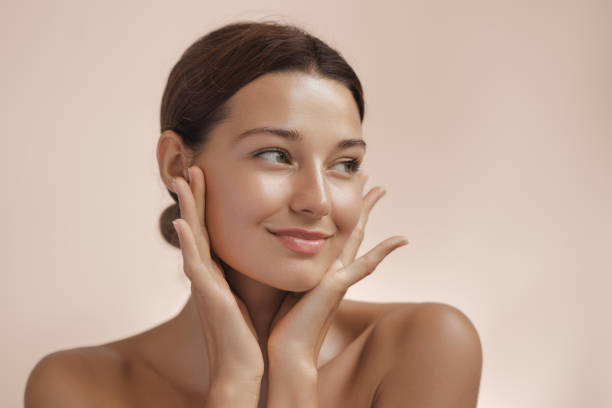
Skincare is essential to self-care, yet it’s surprisingly easy to make mistakes that can undermine your efforts. From over-exfoliating to not applying sunscreen, these common mistakes can leave your skin vulnerable to issues like dryness, irritation, and premature aging.
In this in-depth guide, we’ll explore the most frequent skincare mistakes, explain why they happen, and provide actionable solutions to ensure you get the most out of your routine. Whether you’re new to skincare or a seasoned enthusiast, understanding these pitfalls will help you achieve healthy, glowing skin.
1. Over-Exfoliation: When Too Much of a Good Thing Causes Harm
Why it happens:
Exfoliation is a crucial step in removing dead skin cells, unclogging pores, and promoting cell turnover. However, overuse of scrubs or chemical exfoliants can disrupt the skin’s natural barrier, leading to redness, dryness, and increased sensitivity.
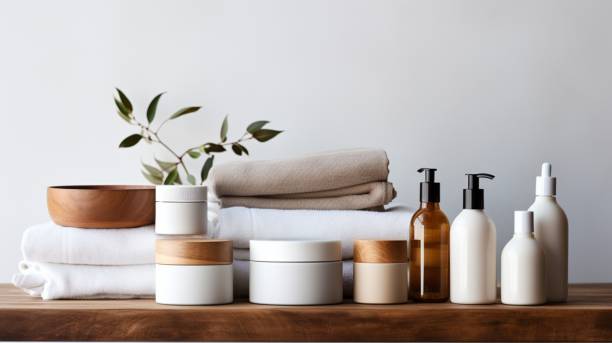
How to fix it:
- Frequency matters: For most skin types, exfoliate no more than 1-2 times per week. Sensitive skin may need exfoliation even less frequently.
- Gentle alternative: Replace harsh scrubs with chemical exfoliants containing lactic acid, mandelic acid, or fruit enzymes, which are mild but effective.
- Hydration is key: Always use a hydrating serum or moisturizer to soothe and repair skin.
2. Not applying sunscreen: The biggest skincare mistake
Why it happens:
Many people mistakenly believe sunscreen is only necessary on sunny days or during outdoor activities. Unfortunately, harmful UVA and UVB rays can penetrate clouds and windows and cause damage even indoors through the blue light emitted from screens.

How to fix it:
- Daily protection: As the final step of your skincare routine, apply a broad-spectrum sunscreen with at least SPF 30 every morning.
- Find your formula: Lightweight, non-comedogenic sunscreens are ideal for daily application and look good under makeup. Look for products with added antioxidants for extra protection.
- Reapply: If outdoors, reapply sunscreen every two hours, and don’t forget often-missed spots like your ears, neck, and hands.
3. Using products inappropriate for your skin type
Why it happens:
It’s easy to be influenced by trendy products or influencers’ recommendations without considering whether they suit your skin type. Using the wrong products can worsen issues like acne, dryness, or sensitivity.
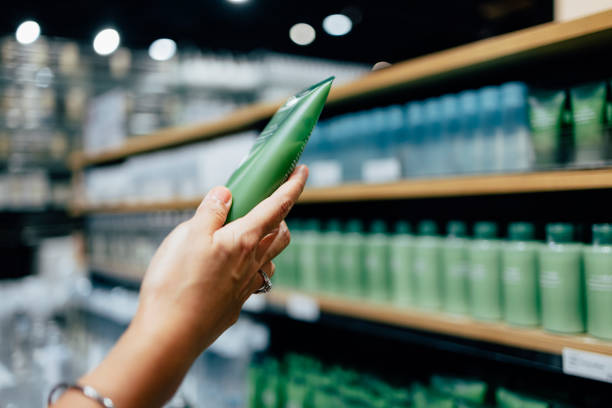
How to fix it:
- Understand your skin type: Is your skin oily, dry, combination, or sensitive? Choose your skincare products accordingly.
- Patch test: When trying a new product, do a patch test on a small area to ensure compatibility with your skin.
- Consult a professional: If you’re unsure about your skin type or needs, consult a dermatologist or licensed aesthetician.
4. Neglecting product layering techniques
Why it happens:
Applying skincare products in the wrong order prevents active ingredients from properly penetrating the skin, reducing their effectiveness.

How to fix it:
- The thin-to-thick rule: Apply products from the lightest consistency (serums, essences) to the heaviest (moisturizers, oils).
- Active ingredients first: Use products with active ingredients like vitamin C or retinol immediately after cleansing and toning for maximum absorption.
- Seal it in: Lock everything in with a good moisturizer and finish with sunscreen in the morning.
5. Sleeping with makeup on: A beauty blunder that damages your skin
Why it happens:
After a long day, the idea of carefully removing your makeup can seem overwhelming, and it may be tempting to skip it altogether. However, sleeping with makeup on is one of the most damaging skincare mistakes you can make. While it may seem like a one-time mistake, it can have lasting consequences on the health and appearance of your skin.
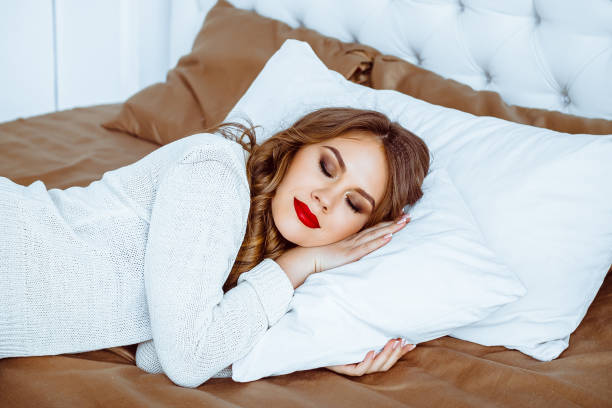
Why sleeping with makeup on is harmful:
1. Clogs pores:
- Makeup, along with the dirt and oil that accumulate on your skin throughout the day, can clog pores, leading to blackheads, whiteheads, and acne.
2. Prevents skin renewal:
- When you sleep, your skin goes through a natural repair and renewal process. The makeup acts as a barrier, which prevents this important function.
3. Accelerates aging:
- Leftover makeup traps free radicals, which break down collagen and elastin, leading to fine lines, wrinkles, and dullness.
4. Irritates eyes:
- Mascara, eyeliner, and eyeshadow left on overnight can irritate eyes, cause redness, and even lead to infections like conjunctivitis.
5. Dries out skin:
- Many makeup products contain ingredients that can dry out the skin when left on for a long period, stripping it of its moisture barrier.

How to fix it:
1. Resolve to remove makeup every night:
- Use a gentle makeup remover, cleansing balm, or micellar water to dissolve makeup without stripping your skin.
2. Cleanse twice:
- After removing makeup, cleanse your skin with a mild, hydrating face wash to remove all traces of makeup and dirt.
3. Use a dedicated eye makeup remover:
- Eye makeup requires special care. Choose a product formulated for sensitive eyes to avoid irritation.
4. Hydrate after cleansing:
- Replenish your skin with a nourishing moisturizer or a hydrating serum with ingredients like hyaluronic acid or aloe vera.
5. Keep makeup wipes as a backup:
- Although not ideal for everyday use, makeup wipes can be a quick solution for late nights when you’re too tired for a full cleansing routine. Practice proper washing when possible.
6. Simplify your routine:
- If removing layers of heavy makeup seems daunting, use lightweight, non-comedogenic products that are easy to scrub away.

Emergency measures in case you forget:
If you wake up and find you have your makeup on, follow these steps:
1. Cleanse thoroughly:
- Use a double-cleansing method to gently remove all traces of makeup.
2. Gently exfoliate:
- Remove dead skin cells with a mild exfoliant or a product containing an AHA-like glycolic acid.
3. Intensely hydrate:
- Apply a hydrating mask or serum to repair your skin barrier.
4. Let your skin rest:
- Avoid applying heavy makeup the next day to allow your skin to recover.
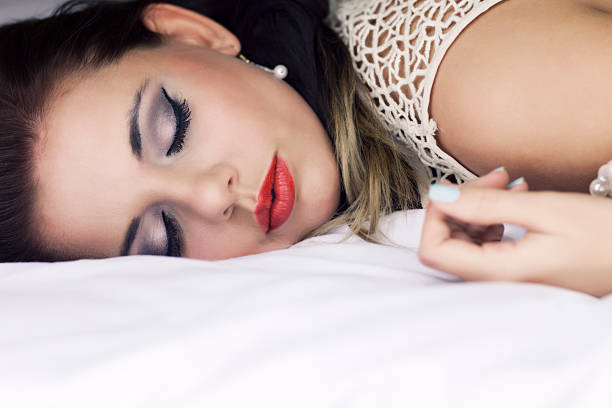
How to prevent it:
1. Build a skincare habit:
- Combine your makeup removal routine with another nightly habit, like brushing your teeth.
2. Keep the essentials close by:
- Keep makeup remover and cotton pads by your bed for quick use.
3. Invest in a quality cleanser:
- Choose a product that feels comfortable and enjoyable to use – it makes the routine less cumbersome.
Long-term benefits of clean skin:
Consistently removing makeup before bed helps prevent acne, reduces premature aging, and helps your skincare products effectively penetrate the skin. This small but important step can transform your skin over time, keeping it healthy, glowing, and youthful.
6. Forgetting the neck and décolletage
Why it happens:
Most people focus on their face, forgetting that the neck and chest areas are equally exposed to environmental stress and aging.

How to fix it:
- Step up your routine: Apply your serums, moisturizers, and sunscreen to your neck and décolletage daily.
- Special care: Use a neck cream or treatment designed to target loose skin and fine lines in these areas.
7. Switching products too quickly: The skincare shortcut that backfires
Why it happens:
The beauty industry is filled with exciting new skincare launches that promise faster, better results. It’s tempting to try every trending product or change your routine at the first sign of a breakout. However, constantly switching skincare products doesn’t give your skin time to adapt. This can lead to irritation, and confusion in identifying which works, and can even exacerbate existing skin issues.

Why switching products too quickly is harmful:
1. Skin needs time to adjust:
- Your skin has a natural renewal cycle (about 28 days). Using a product for less than this time doesn’t allow you to see its full effects.
- Active ingredients like retinol or acids often cause a temporary “cleansing” before improving the skin.
2. Increases sensitivity:
- Using too many new ingredients at once can overwhelm your skin, causing redness, irritation, or acne.
3. Hides real results:
- If you constantly switch products, it’s hard to determine which products are truly effective for your skin.
4. Worsens skin conditions:
- Sudden changes to your skincare routine can disrupt your skin barrier, causing dryness, acne, or sensitivity.

How to fix it:
1. Use one product at a time:
- Start with one new product and use it consistently for at least 2-4 weeks before adding another. This helps you monitor your skin’s reaction.
2. Do a patch test first:
- Apply a small amount of the new product to the inside of your arm or behind your ear for 24-48 hours to check for allergies or irritation.
3. Follow a gradual introduction:
- For powerful ingredients like retinol or AHAs/BHAs, start with application 1-2 times per week, then slowly increase the frequency as your skin becomes tolerant.
4. Stick to the basics:
- Use a simple, consistent skincare routine as your baseline. Focus on cleansing, moisturizing, and applying sunscreen before experimenting with advanced treatments.
5. Be patient:
- Give new products time to show results. Many take weeks (or even months) to bring about visible changes.
6. Track your progress:
- Keep a skincare journal. Note when you started a product, its active ingredients, and any changes you notice. This helps you identify what’s working (or not) over time.

Signs you’re making too many changes:
- Persistent breakouts, redness, or irritation.
- Skin feels dry or tight despite moisturizing.
- Skin problems that may worsen over time
- Shelves full of rarely used skincare products!

When is it okay to stop using a product:
While consistency is important, some situations require immediate discontinuation:
- Severe irritation or allergic reaction: Stop using the product and consult a dermatologist if necessary.
- Persistent acne or clogged pores: If your skin doesn’t heal after 4-6 weeks, the product may not be suitable for your skin type.
- Incompatibility with other products: Check for ingredient conflicts (for example, using retinol with benzoyl peroxide).

How to create a thoughtful skincare routine
- Focus on long-term goals, not quick solutions.
- Start with the essentials like a gentle cleanser, moisturizer, and sunscreen.
- Slowly add targeted treatments (like serums), making sure they address your primary skin concerns.
8. Overloading on active ingredients
Why it happens:
The allure of powerful ingredients like retinol, vitamin C, and AHAs can lead to overuse, which can lead to irritation, peeling, or sensitivity.

How to fix it:
- Less is more: Use one or two actives at a time and alternate between uses as needed.
- Seek advice from a dermatologist: For powerful ingredients, follow professional guidance on safe use.
9. Using too hot water: The steamy mistake that leaves your skin
Why it happens:
Taking a hot shower or washing your face feels incredibly relaxing, especially after a long day or during the colder months. However, many people don’t realize that water temperature plays an important role in skincare. Using too hot water can strip the skin of its natural oils, weakening its moisture barrier and increasing the risk of dryness, redness, and sensitivity.

How hot water affects your skin:
- Strips off natural oils: Hot water dissolves the sebum (natural oil) on the surface of your skin, leaving it dry and prone to irritation.
- Weakens moisture layer: Extreme heat disrupts the skin’s protective layer, making it more vulnerable to environmental damage and dehydration.
- Aggravates inflammation: Heat causes blood vessels to dilate, leading to redness and sensitivity, especially in people with rosacea or eczema.
- Aggravates acne: Overdrying the skin can increase oil production, which can make acne worse over time.

How to fix it:
1. Use lukewarm water:
- Looking like lukewarm water is the best choice for cleansing. It effectively removes dirt and oil without stripping away your skin’s protective layer.
- Test the water temperature with your hand before cleansing—if it feels warm, it’s too hot.
2. Limit shower time:
- Limit showers to 5-10 minutes to avoid exposure to hot water, especially in the colder months.
- Avoid direct exposure to hot water on your face, as facial skin is more sensitive than the rest of your body.
3. Use a mild cleanser:
- Use a gentle, hydrating cleanser with lukewarm water to maintain your skin’s natural balance.
- Avoid harsh, stripping cleansers that can exacerbate the dryness caused by heat.
4. Lock in moisture:
- Apply a moisturizer immediately after washing while your skin is still damp. This locks in moisture and restores the skin barrier.
- Use ingredients like hyaluronic acid, glycerin, or ceramides to boost moisture.

Take a cold shower:
- Splash cold water after bathing or washing your face. This helps close pores, soothe inflammation, and refresh your skin.
Signs you’re using too hot water:
- Persistent redness or flushing after washing.
- Tightness, dryness, or itching of the skin immediately after cleansing.
- Dryness or peeling of the skin, especially in the colder months.
- Increased sensitivity to skincare products.

Why is cold water better?
Using cold water not only prevents skin damage; it actively promotes healthier, more balanced skin. Lukewarm water helps maintain the skin’s pH, retaining its moisture and reducing the risk of irritation.
10. Neglecting lifestyle factors
Why it happens:
Skincare is often seen as only external care, but diet, hydration, and sleep deeply impact skin health.

How to fix it:
- Stay hydrated: Drink at least 8 glasses of water daily to keep your skin supple and glowing.
- Eat clean: Include foods rich in antioxidants, omega-3s, and vitamins A and E for glowing skin.
- Prioritize sleep: Get a good 7-9 hours of sleep every night to allow your skin to recover.
11. Popping pimples: The temptation that can backfire
Why it happens:
There’s something undeniably tempting about popping a pimple — especially when it’s big, red, and right in the middle of your face. Many people believe that squeezing a pimple will make it disappear faster. Unfortunately, that’s far from the truth. Popping pimples can also push bacteria deeper into the skin, which can lead to inflammation, scarring, and even more acne.
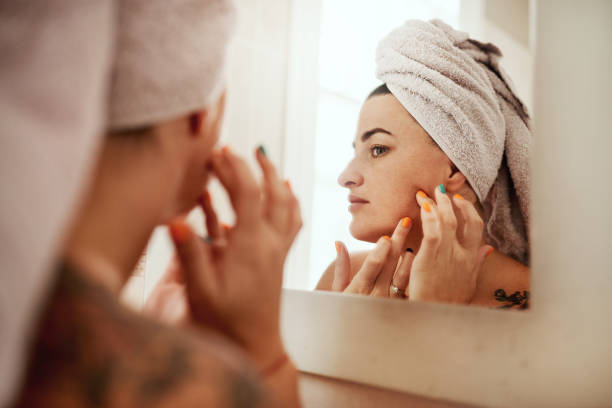
The consequences of popping pimples:
- Infection: Your hands carry bacteria that can cause acne to develop. Popping pimples can make them worse or create new pimples nearby.
- Scarring: Popping pimples forcefully can damage deeper layers of skin, resulting in long-term scarring.
- Hyperpigmentation: Popping your skin can cause post-inflammatory hyperpigmentation, leaving behind dark spots.
- Delayed healing: Instead of healing blemishes, popping often causes redness and swelling to persist for a long time.

How to Fix It:
1. Don’t touch:
- No matter how tempting it is, resist the urge to pop pimples. Skin heals faster without disruption.
2, Use spot treatments:
- Apply products containing salicylic acid, benzoyl peroxide, or tea tree oil directly to the blemish. These ingredients reduce inflammation, kill bacteria, and speed healing.
- For cystic acne, consider spot treatment with sulfur or adapalene gel.
3. Apply ice to the area:
- For painful, swollen pimples, wrap a piece of ice in a clean cloth and apply it to the area for 5-10 minutes to reduce swelling.
4. Try pimple patches:
- Hydrocolloid patches are great for absorbing excess fluid and preventing you from touching the blemish.
5. Professional help:
- If the pimple is large or persistent, see a dermatologist. They can perform a safe extraction or give a cortisone shot to quickly reduce inflammation.
6. Focus on prevention:
- Follow a regular skincare routine that includes gentle cleansing, exfoliation, and non-comedogenic moisturizers to keep pores clear.
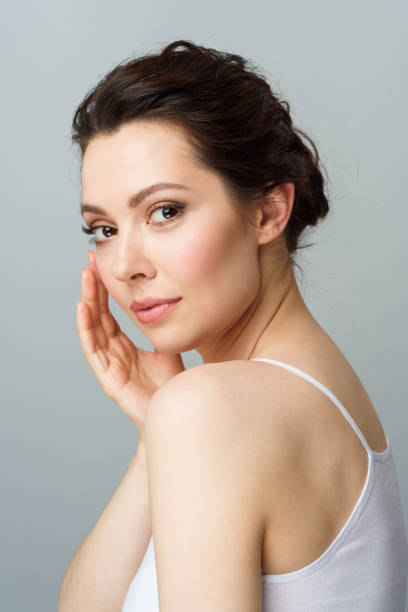
What to do if you’ve already popped it:
- Clean it: Immediately clean the area with a gentle cleanser or antiseptic to remove bacteria.
- Apply a healing ointment: Use a product containing aloe vera, panthenol, or niacinamide to soothe the skin and promote healing.
- Cover it: Apply a thin layer of hydrocolloid dressing to protect the scar and absorb any remaining fluid.
- Avoid retouching: Resist the urge to pick at the scab that forms — let it heal naturally.
The golden rule: Prevention is better than cure
Instead of dealing with the damage caused by popped pimples, focus on maintaining clean skin through preventive measures. Keep your hands off your face, follow a balanced skincare routine, and treat blemishes gently.
12. Ignoring seasonal changes: adapt to your skin’s needs throughout the year
Why it happens:
Many people fall into the habit of using the same skincare products throughout the year, assuming their skin needs are always the same. However, changing weather conditions – such as humidity, temperature, and sun exposure – have a significant impact on the skin. Ignoring these changes can lead to problems such as dryness in winter or excess oiliness in summer.

How seasonal changes affect your skin:
- Winter: Cold air and indoor heating strip your skin of moisture, leading to dryness, flakiness, and irritation. Less sunlight can also fade your complexion.
- Summer: Heat and humidity increase sweat and sebum production, leading to oily skin, clogged pores, and acne.
- Spring and fall: Sensitivity and skin rashes can occur during transition seasons due to fluctuating temperatures and exposure to pollen.

How to fix it:
1. Change your moisturizer:
- In the winter, choose rich, emollient creams containing ceramides, shea butte,r, or hyaluronic acid to maintain hydration.
- In the summer, use a lightweight, oil-free moisturizer or gel-based formula to prevent stickiness.
2. Adjust cleanser:
- In cold weather, use a gentle, hydrating cleanser to avoid stripping natural oils.
- During warmer months, a light foaming or gel cleanser can help manage excess oil without being overly drying.
3. Sunscreen all year round:
- Don’t skip sunscreen in the winter! UV rays are present year-round and can penetrate clouds, leading to premature aging and pigmentation.
- Consider switching to a waterproof formula to withstand sweat and swimming in the summer.
4. Incorporate seasonal ingredients:
- In fall and winter, use ingredients like vitamin C to combat dullness and repair summer sun damage.
- In spring and summer, incorporate niacinamide or green tea extract to reduce redness and control oil.
5. Exfoliate smartly:
- In the colder months, reduce the frequency of exfoliation to prevent skin from drying out further.
- In summer, light exfoliation can help keep pores free from sweat and sunscreen buildup.
6. Protect from environmental stressors:
- Use antioxidant serums year-round to protect your skin from free radicals caused by pollution, UV rays, and seasonal allergies.
7. Humidifier for winter:
Fight the dryness of indoor heating by using a humidifier to keep skin hydrated.
8. Hydrate more in the summer:
Drink more water during the warmer months to compensate for water loss through sweating, this helps maintain skin’s elasticity and glow.

Quick seasonal checklist:
| Season | Key Focus | Recommended Products |
|---|---|---|
| Winter | Hydration & Barrier Repair | Rich moisturizers, hydrating cleansers, ceramides |
| Summer | Oil Control & UV Protection | Lightweight SPF, gel moisturizers, niacinamide |
| Spring | Sensitivity & Brightening | Soothing serums, vitamin C, antihistamines |
| Fall | Repair & Exfoliation | AHA serums, antioxidant creams, gentle scrubs |

Why seasonal adjustments are inevitable
Your skin’s needs are as dynamic as the weather. Ignoring these changes can not only cause discomfort but also hinder the effectiveness of your skincare routine. By changing your products and habits seasonally, you’ll keep your skin balanced, healthy, and glowing all year long.
Conclusion: Improving your skincare routine
Your skin is unique, and caring for it requires patience, consistency, and a little education. By avoiding these common mistakes, you can maximize the benefits of your skincare routine and achieve the glowing, healthy skin you’ve always wanted.
Find more tips and advice at Holistically Health & Beauty, your go-to destination for holistic health and beauty information!





